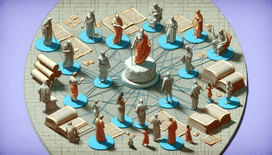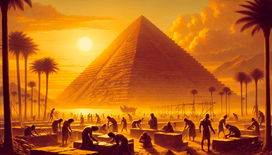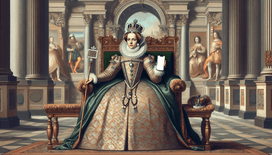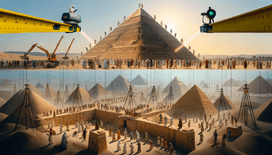Ah, the Wright Brothers! Those intrepid inventors whose whimsical flying contraption made them the undisputed birdmen of Kitty Hawk. Orville and Wilbur, the fraternal duo of flight, didn't have much more than wood, cloth, and a fierce belief in the impossible. But let's imagine, for a moment, that these pioneering siblings had more than just their aeronautical theories and workshop tinkering at their disposal. Let's picture them in a world where Augmented Reality (AR) could have soared alongside their dreams.
A wing and an AR prayer
On a chilly morning in December 1903, our dear Wright Brothers struggled against the wind with a clunky assembly that most observers could've mistaken for a prop from a Jules Verne novel. Now imagine, if you will, these jovial inventors donning a sleek pair of AR glasses, enabling them to not just visualise aerodynamics, but to literally see airflows and lift vectors. No more headache-inducing calculations, just look and learn!
With AR's power of information overlay, Wilbur could be talking to Orville about their previous flight attempts when suddenly, those very attempts could replay over the landscape, showing just where that curve veered off course, or that landing, quite literally, landed. Perhaps with such hindsight, the brothers might have ironed out a few more kinks in their design before that first fateful flight.
Let your imagination take flight
Think about the myriad ways AR could enhance the humble workshop where Orville and Wilbur crafted their creations. No more fiddling with dimly lit drawings or vague sketches. With a swish of a finger, our intrepid brothers could have summoned a full 3D model of their Flyer, rotating it this way and that, taking a gander at how it might perform in different wind speeds, or if it could withstand a midday picnic with the pigeons at Trafalgar Square.
And when things went amuck as things often do? An AR-enabled troubleshooting guide could pop up right in front of their eyes. "Ah, that's why the wing won't hold," Orville might exclaim, squinting as an animated Charles Rolls provides an instructional step-by-step, replete with gesticulations worthy of a sign language interpreter on too much caffeine.
Pre-flight AR check
Even before setting out on their epic air conquest, Orville and Wilbur could have conducted pre-flight checks using AR. With a mere tap on their futuristic spectacles, an inspection overlay would appear, highlighting the tension in the ropes, the tautness of the wings, and even performing a rudimentary 'virtual' fuel gauge of sorts, lest they run out of biscuits mid-flight. It would be like having a mechanical hawk eye watching over their every move.
The brothers could communicate with the AR system simply by musing aloud about the weather, "Air pressure's a bit high today, don’t you think, Wilbur old chap?", prompting their AR assistant to chime in with forecasts that wouldn’t sound out of place read by a witty weatherman.
Revolution spreading its wings
As they took their successful first flight, their celebration could have gone viral long before TikTok made such things common. Imagine fans, followers, and fellow tinkerers watching live streams of the flight itself (from the skies, no less!) like paparazzi squirrels capturing their very own Big Nut moment. With AR, the brothers could have engaged in one-on-one tutorials on aviation, inspiring tinkerers far and wide much faster than a transatlantic telegram could carry the news.
Despite their triumph being a matter of historical record, with AR at their disposal, Orville and Wilbur’s inventions could have advanced even further during their time. Imagine schools of AR-engineered aviation, right from their workshop in Dayton, popping up across the globe, from Brighton to Brisbane, offering a feather in the cap of the technologically thirsty.
Conclusion: The Wright way forward
In an intriguing twist of fate, AR could have taken its cues from those magical early flight machines, rather than the other way around. While in reality, Orville and Wilbur’s ingenuity built the foundation upon which modern aviation stands, it’s invigorating to imagine just how much more buoyant their dreams might have become with augmented eyes in the sky.
Why, the gentle hum of Orville and Wilbur’s workshop transformed into a buzzing hive of AR-enhanced innovation makes one positively giddy! So, if history were to fold into the whimsical realm of "What if?" perhaps we'll see that the Wrights were not just engineering planes but rather, a future where technology and imagination soar hand in hand.







